This post may contain affiliate links. If you use these links to buy something we may earn a commission. Thanks.
Certain ground-covering plants are loved by deer while others are never eaten! Most deer-resistant plants are a combination of undesirable (to them) and withstanding heavy pruning.
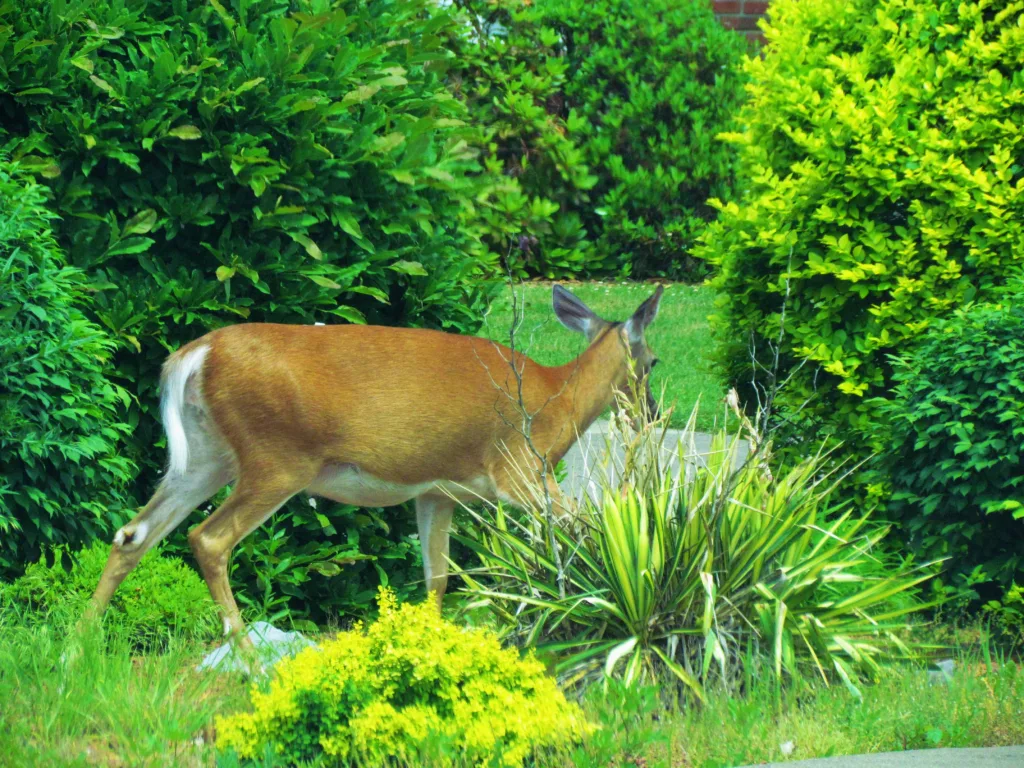
In this post, you’ll find all the best deer-resistant ground covers even for slopes, shade, drought-prone areas, and even ones that are low maintenance.
If you have a potentially eroding slope, it’s vital to get roots in the ground and plant material above it to slow down the flow of water. Deer may also be deterred from coming up (or down) and into your space with erosion-controlling ground covers such as junipers. Junipers are a common choice for this position as they are fast-growing and not soft against the legs!
Deer tend to hang around in protected (shady) areas as they often prefer to avoid open spaces. So I’ve included a team of shade-loving ground cover options in this post.
These days, a period of drought is common just about everywhere. I highly recommend incorporating some drought-tolerant species into your deer-resistant garden to alleviate your workload in those hot but busy summers. Many ground cover options in this post are drought tolerant.
‘Deer resistant’ is not synonymous with ‘deer proof.’
We suggest you incorporate a variety of deer-resistant plants as well as ‘trap’ plants—plants that grow plentiful and that you don’t mind getting munched on by deer. A ‘trap’ crop, in this regard, consists of deer-loving plants that are grown nearby and discourage deer from nomming down on your showy garden.
If you struggle with deer, I recommend you read 11 Easy Noises & Sounds To Scare Deer Away For Good.
The whole goal when using deer-deterring tactics, is to train deer to be a bit more weary of your place. And that other places are an easier target.
Pink Pewter / Spotted Deadnettle (lamium)
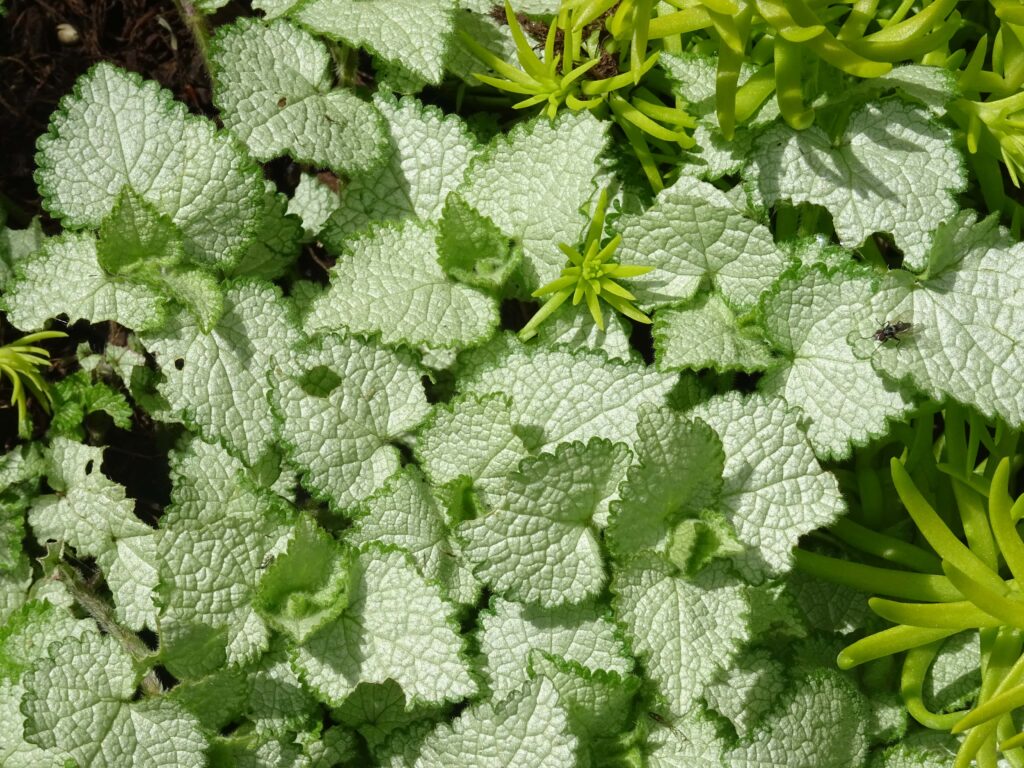
A perfect deer-resistant ground cover for shade.
Often planted as a ground cover to border beds or below perennials shrubs and trees. Attractive silver foliage is outlined with darker green edges.
- Height: 6-8 inches.
- Range: Asia and Europe.
- Climate: Zone 3-8
- Functions: Easy to grow ground cover. Pest resistant. Attractive and ornamental.
- Light requirements: Full shade to partial shade.
- Soil preferences: Well-drained moist soils and drought tolerant.
Plants and seeds are available here. Various plant starts and colors are available here.
See more: Best Shade-Loving Ground Covers (Complete Guide)
Low Catmint (Nepeta x faassenii ‘Walker’s Low’)
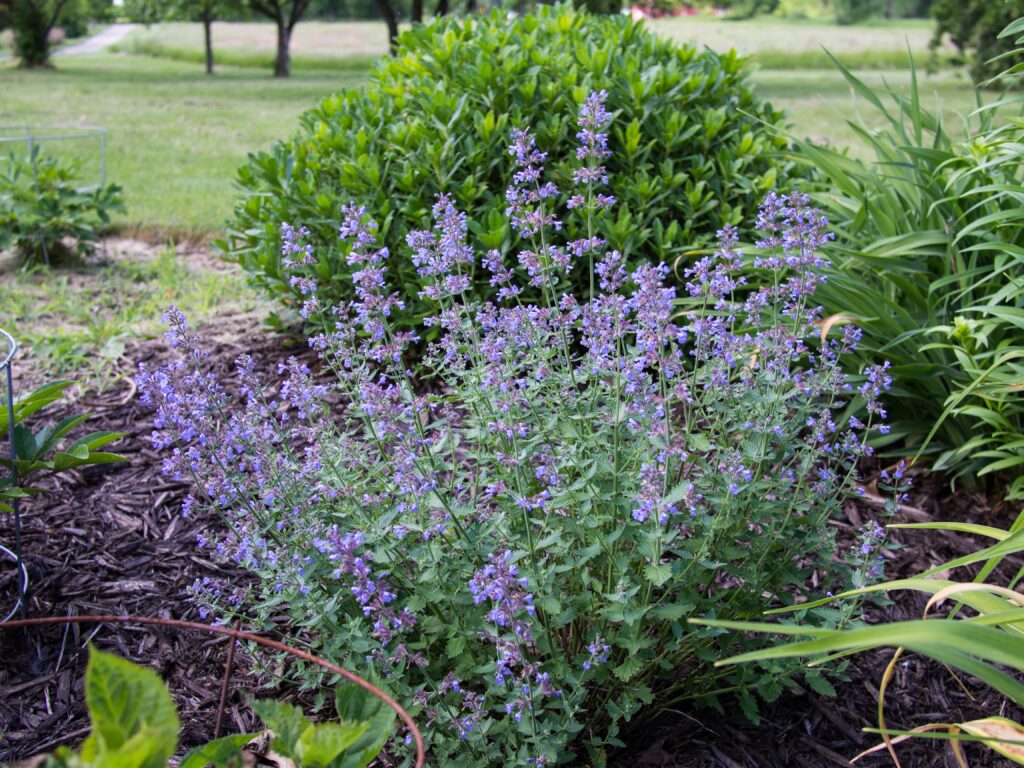
A popular fast-growing and drought-tolerant ground cover for deer-resistant gardens. Cat mint has a wonderful fragrance and can also be enjoyed as tea!
Catmint is also very low maintenance.
- Height: 2-3 feet
- Range: Asia, Middle East, and Europe.
- Climate: Zone 4-9
- Functions: Easy to grow and fragrant ground cover. Pest resistant. Attractive and ornamental.
- Light requirements: Full sun to partial shade.
- Soil preferences: Adaptable to various soil types and watering. Drought tolerant.
Plants are available here.
Corkscrew Rush (Juncus effusus f. Spiralis)
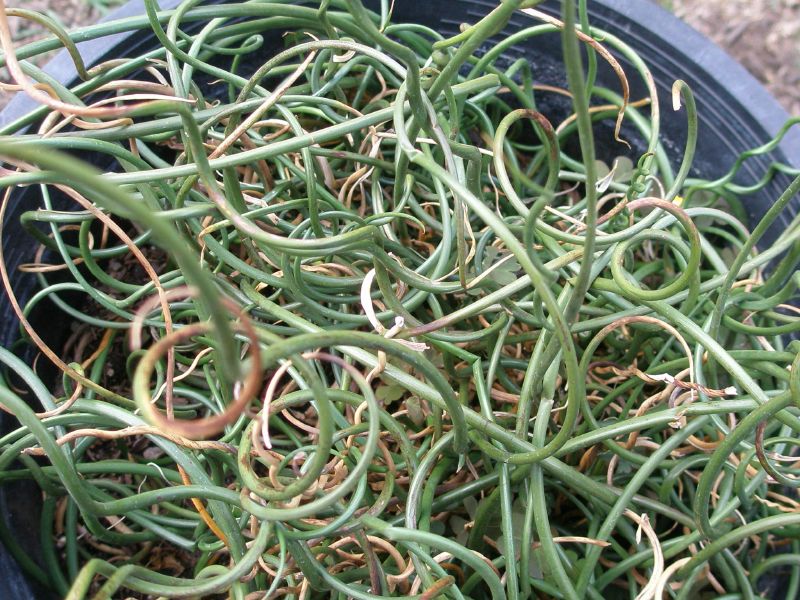
Need a deer-resistant ground cover for boggy or wet areas? Corkscrew Rush is one of a few great choices. So long as you don’t plant this in an excessively dry area, it’ll do great without help.
- Height: 10-12 inches
- Range: North America, Asia, and Europe
- Climate: Zone 5-11
- Functions: Attractive and ornamental. Pest resistant and very easy to care for.
- Light requirements: Full sun to partial shade.
- Soil preferences: Wet or well-drained moist soils.
Plants are available here.
Salvia (Salvia nemorosa)
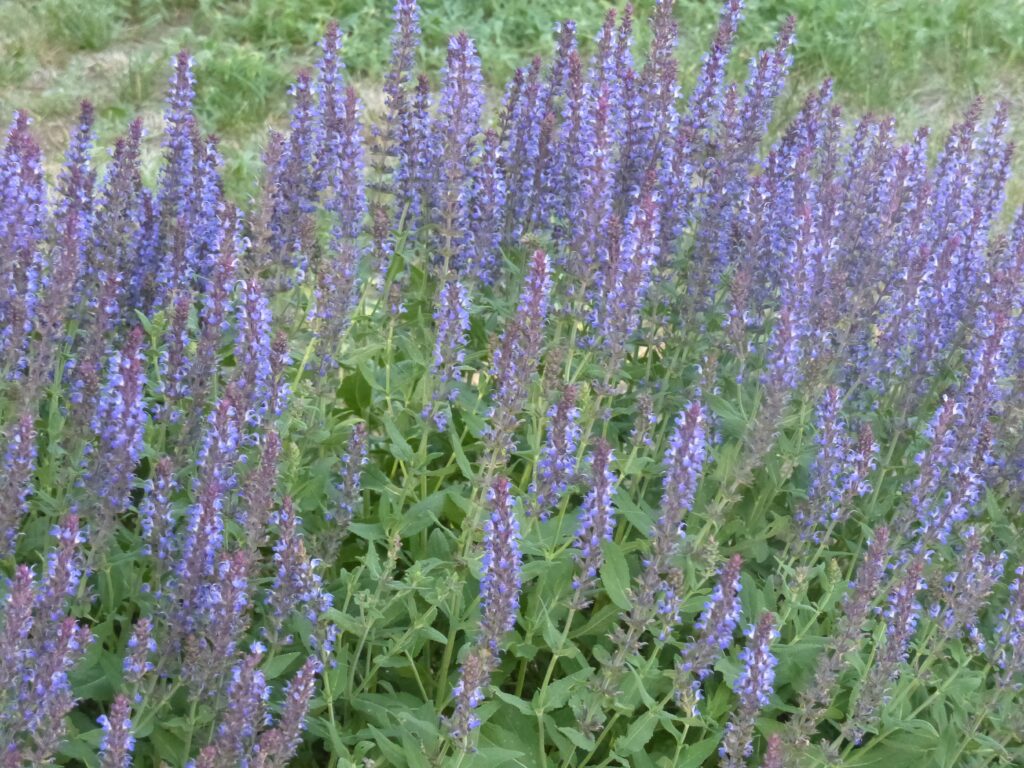
While pest-resistant, this fragrant ground cover attracts beneficial pollinators—helping your whole garden thrive.
- Height: 10-12 inches
- Range: Central and South America, Asia, Africa, and Europe.
- Climate: Zone 3-8
- Functions: Fragrant flowers with a clumping habit. Pest resistant edging. Attractive and ornamental. Great for rock gardens and low maintenance.
- Light requirements: Full sun
- Soil preferences: Well-drained soils and drought tolerant.
Various types of salvia are available here.
Dianthus
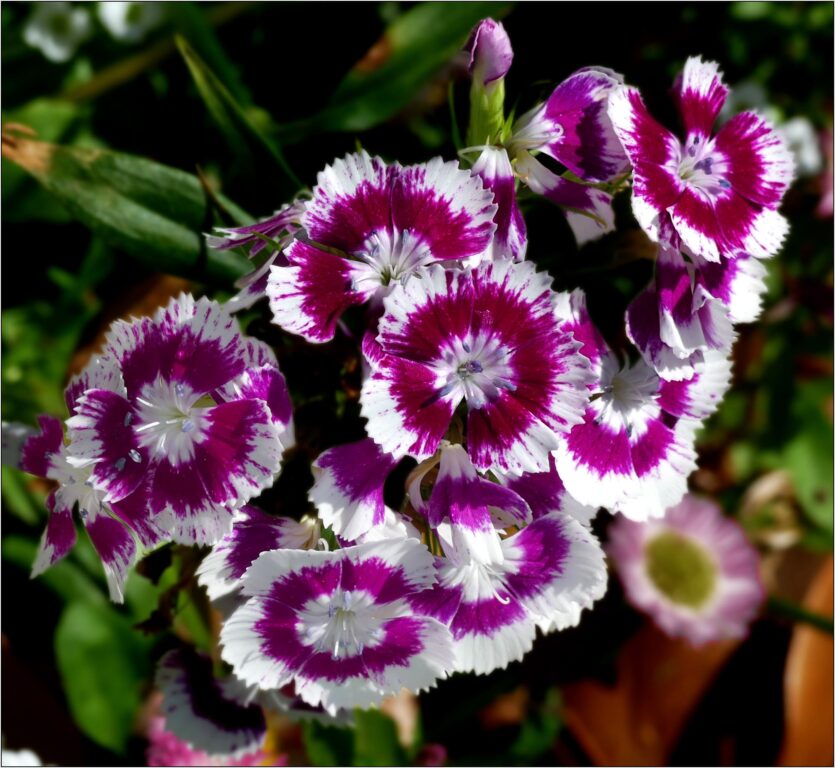
A lower-growing deer-resistant ground cover with evergreen foliage and vibrant blooms—most often white, purple, or pink from early spring to summer.
Like many flowering perennials, you’ll get a second flush of blooms later in the year if you cut back the first set of old flowers.
- Height: 8-10 inches
- Range: Asia and Europe.
- Climate: Zone 4-9
- Functions: Fragrance. Evergreen foliage. Pest resistance. Gorgeous ornamental.
- Light requirements: Full sun to partial shade.
- Soil preferences: Well-drained or moist soils and drought tolerant.
A large selection of dianthus is available here.
Ice Plant (Delosperma)
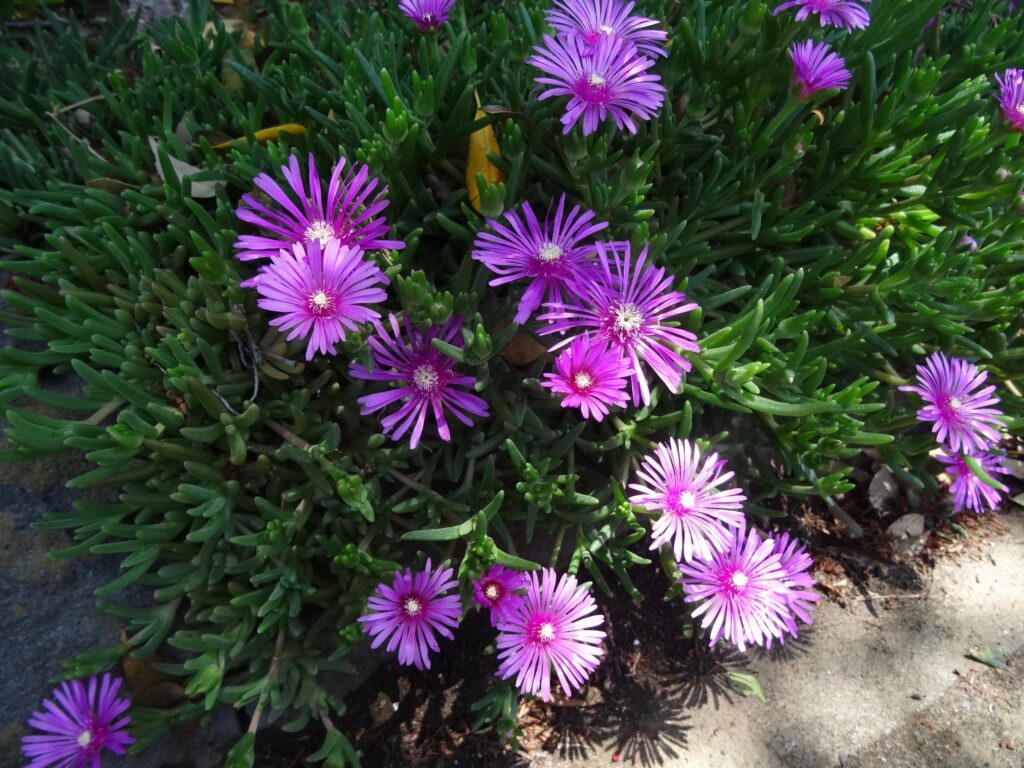
Iceplants are pretty cute. They also have salty, succulent edible foliage.
- Height: 2-3 inches
- Range: South Africa
- Climate: Zone 4-8
- Functions: Very low-growing and heat tolerant ground cover. Not a chosen snack for deer or rabbits. Showy and long-lasting ornamental flowers and succulent evergreen foliage.
- Light requirements: Full sun.
- Soil preferences: Light textured soils and drought tolerant.
Iceplants flower in various colors—purple, reds, oranges, and more are available here.
Liriope
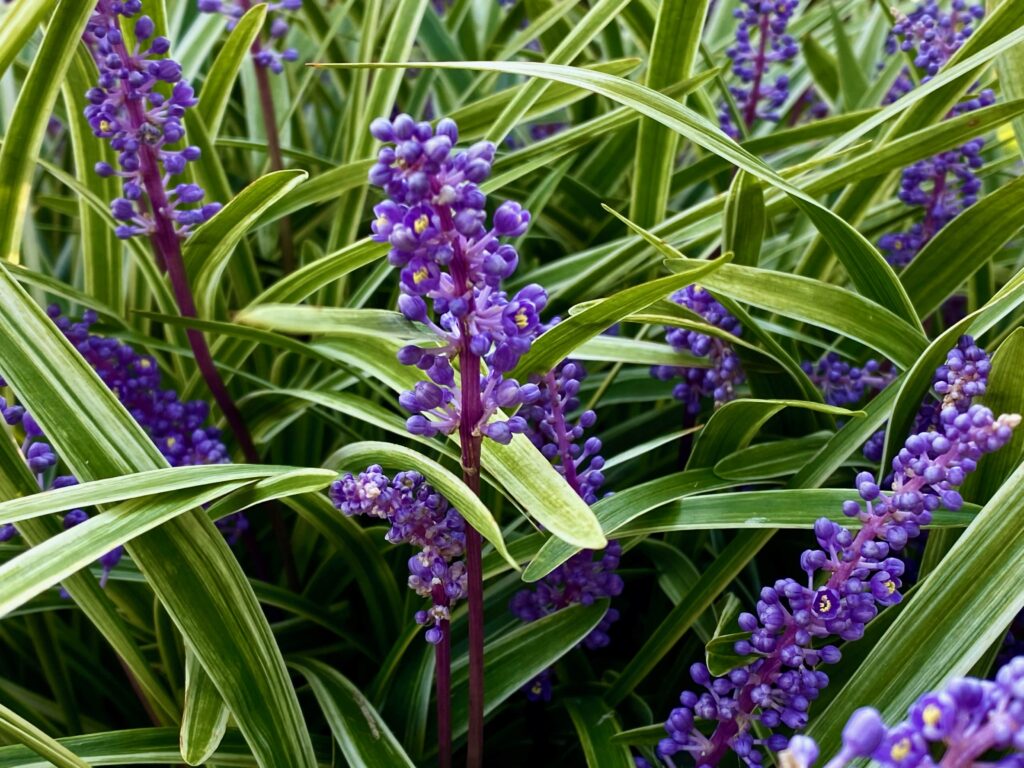
Liriope plants are grassy-looking ground covers that grow in clumps and offer heat-loving deer and rabbit resistance. They often have purple or blue flower spikes from summer to fall.
- Height: 10-12 inches
- Range: Asia
- Climate: Zone 5-10
- Functions: Very low maintenance and pests resistant ground cover ground cover. Often used to fill in the gaps of gardens.
- Light requirements: Full sun to partial shade.
- Soil preferences: Well-drained or moist soils. Heat and drought tolerant.
Several varieties and coloring are available here.
Verbena
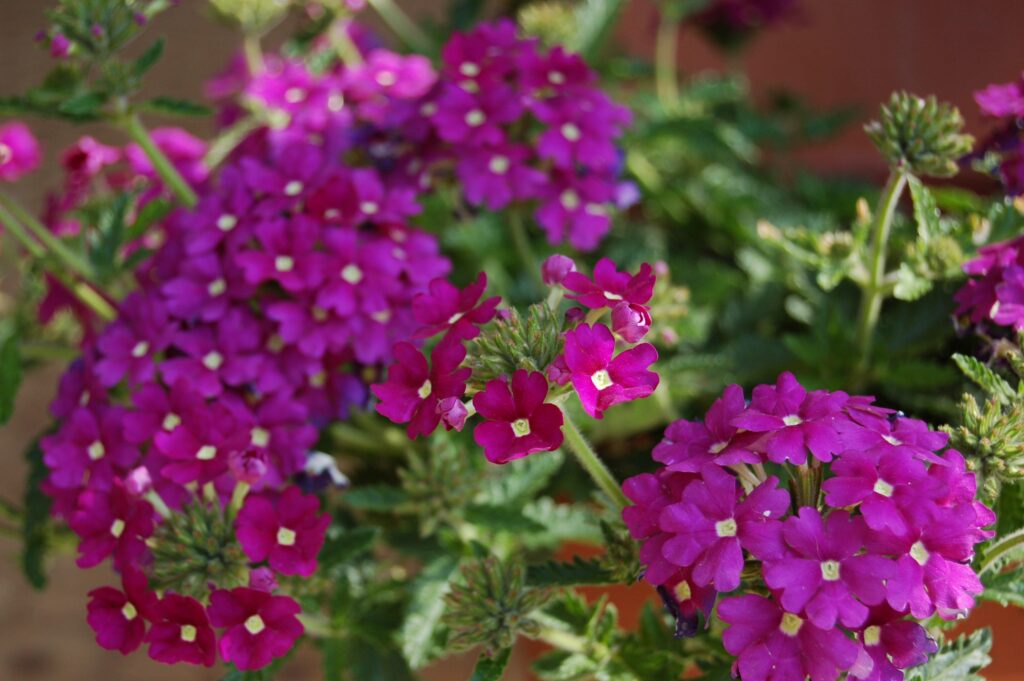
Your average deer finds verbena too pungent to consume. Their lemony scent is a big deterrent for all sorts of plant-munching pests. Long-lasting flowers also attract beneficial pollinators which are often predators that can help restore balance the rest of your garden.
- Height: 6-12 inches
- Range: Asia and America
- Climate: Zone 3-11
- Functions: Ornamental ground cover with long-lasting flowers. Attracts butterflies and pollinators. Low maintenance. Fragrant with a lemony scent. Deer resistant.
- Light requirements: Full shade to partial shade.
- Soil preferences: Well-drained soils and drought tolerant.
Flowering colors from white, red, to purple are available for your choosing here. These varieties are more or less hardy to colder climates so consider their growing zones when choosing between them.
Delphinium
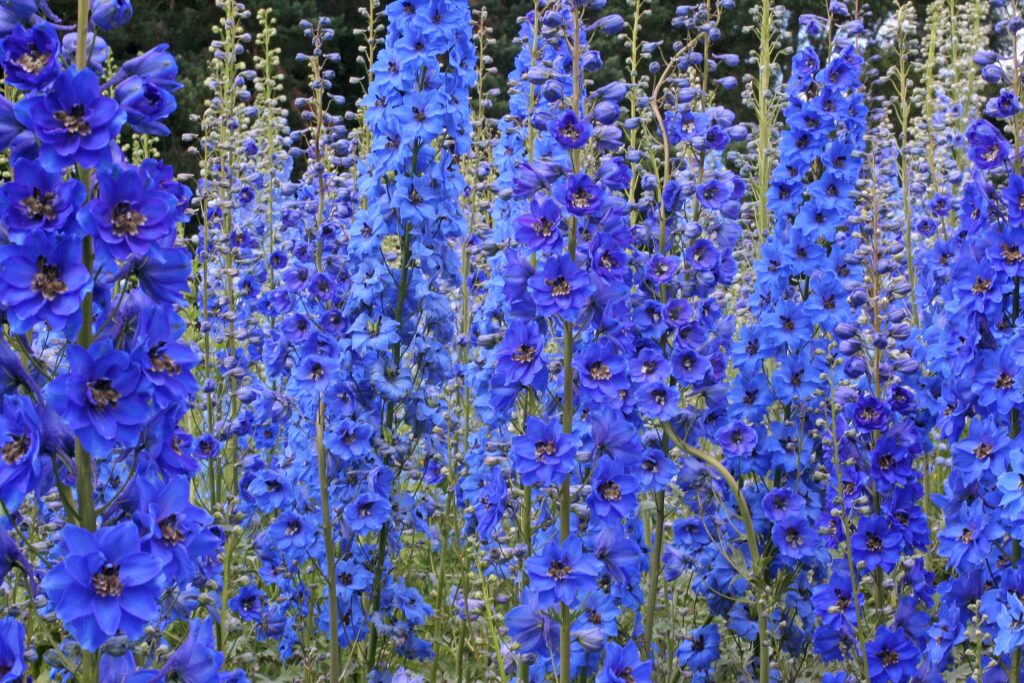
Delphiniums offer gorgeous tall flower spikes. Delphiniums are known for being low maintenance and for tolerating hot temperatures and humid environments.
Rabbits and deer don’t tend to eat delphiniums so your gorgeous blue or lavender flowers will be long-lasting.
- Height: 5-6 feet
- Range: North America
- Climate: Zone 3-7
- Functions: Easy to grow and tall flowering ground cover for ornamental and pollinator purposes.
- Light requirements: Full sun to partial shade.
- Soil preferences: Well-drained soils and moist soils.
A selection of delphiniums is available here.
Foamflower (Tiarella)
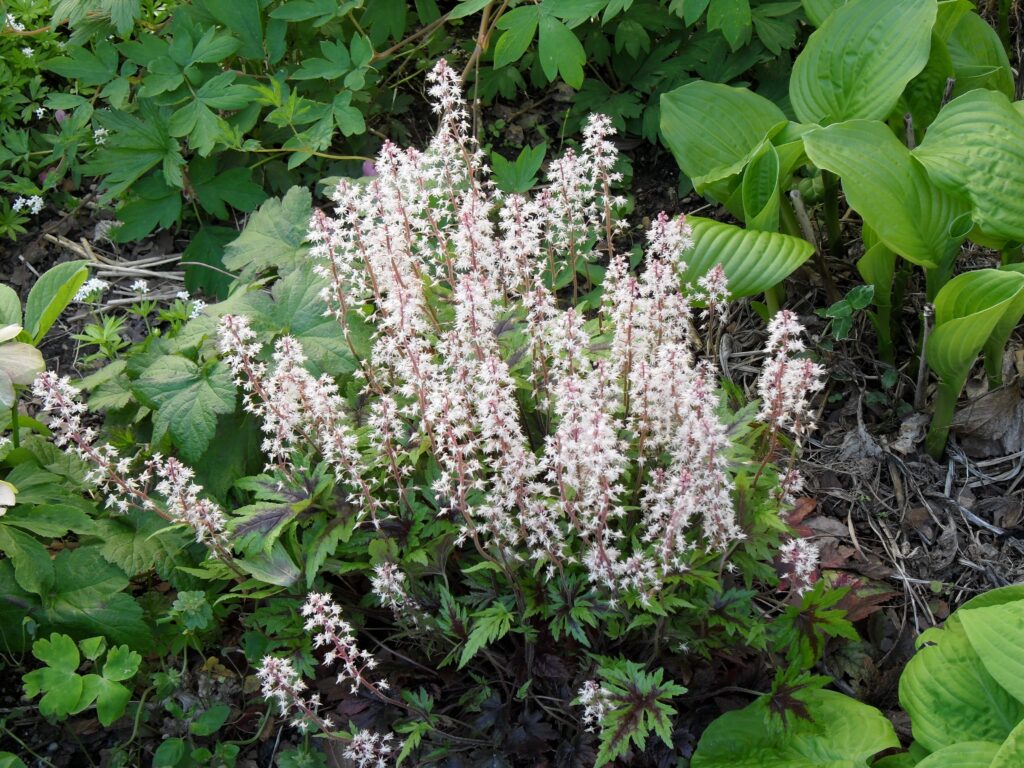
Foamflowers make a gorgeous shade-loving ground cover with interesting flowers. Their flowers do look foamy indeed and are often swarming with beneficial pollinators. The foliage is striking with deep coloring in the center and green on the margins. It reminds me a bit like coleus.
- Height: 12 inches
- Range: North America
- Climate: Zone 4-9
- Functions: Native and pollinator-friendly ground cover. Very ornamental foliage and dense ground coverage.
- Light requirements: Full shade to partial shade.
- Soil preferences: Well-drained soils and moist soils.
Various types of foamflower plants are available for online ordering here.
Bee Balm
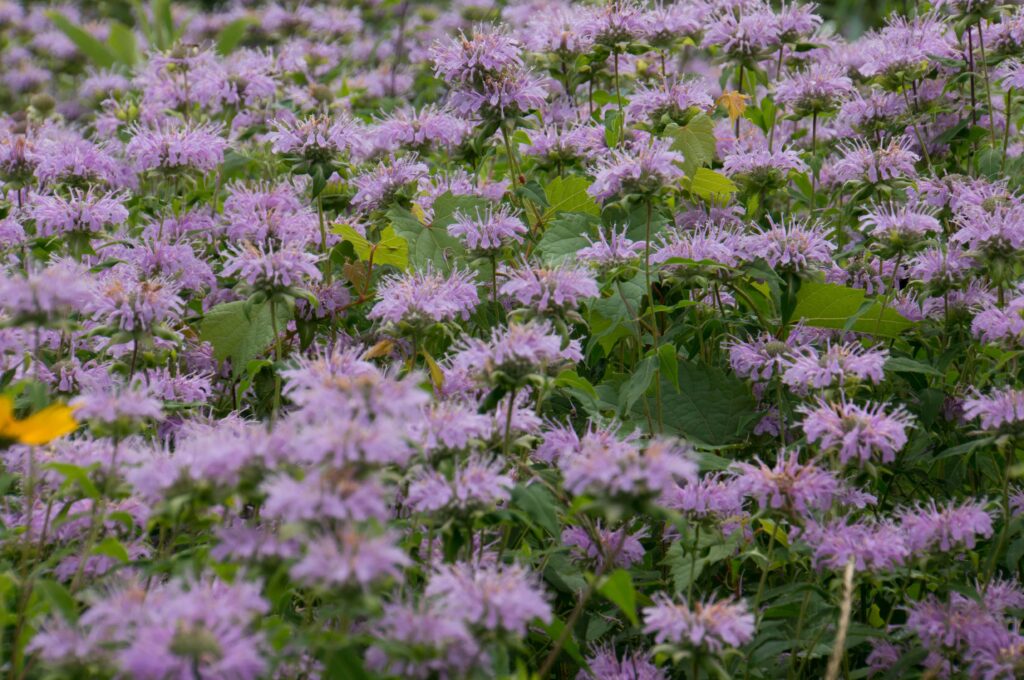
Bee balm is one of those excessively (but delightfully) fragrant plants. Deers’ sensitive noses avoid overly perfumy plants in the same way we use spices sparingly.
The flowers are gorgeous and deeply colored from fuschia pinks, deep reds, purples, and lavenders. Not to mention, they make a scrumptious cup of tea!
In summer, bee balm will be buzzing with bees! I’ve nearly grabbed multiple when harvesting fresh blooms for tea.
- Height:
- Range: Asia and Europe.
- Climate: Zone 3-8
- Functions: Edible easy ground cover. Pollinator-friendly and pest-resistant.
- Light requirements: Full shade to partial shade.
- Soil preferences: Well-drained soils and drought tolerant.
All the best options for bee balm plants are available here.
Canary Feathers Cordyalis
Yellow flowers bloom from summer to fall and deer don’t seem to like this plant. While daylily flowers are consumed, canary feathers are most likely to be left alone.
- Height: 9-12 inches
- Range: North America
- Climate: Zone 6-9
- Functions: Textured foliage ornamental and bright blooms for darker spaces. Deer resistant.
- Light requirements: Full shade to partial shade.
- Soil preferences: Well-drained soils.
This plant is available here.
Lobelia

Known as cardinal flowers, lobelia plants are often left alone by deer! Lucky for us, this ground cover offers gorgeous and long-lasting blooms of various colors.
Blooms are still prolific in partial shade and are a popular choice for brightening dark areas. Lobelia is often planted in moist areas such as low spots or beside ponds and streams. Butterflies and hummingbirds love this plant just as much as gardeners do!
- Height: 20 inches
- Range: North America
- Climate: Zone 4-11
- Functions: Flowering native ornamental ground cover. Pollinator-friendly. Fast and easy growth and care
- Light requirements: Full sun to partial shade.
- Soil preferences: Well-drained and moist soils. Suitable for sand, silt, or clay-heavy soils.
Multiple flower colors including pinks, blues, whites, purples, and reds are available here! Keep in mind when choosing, some are more or less hardy to cold, so keep an eye on the hardiness zones when selecting.
Basket of gold
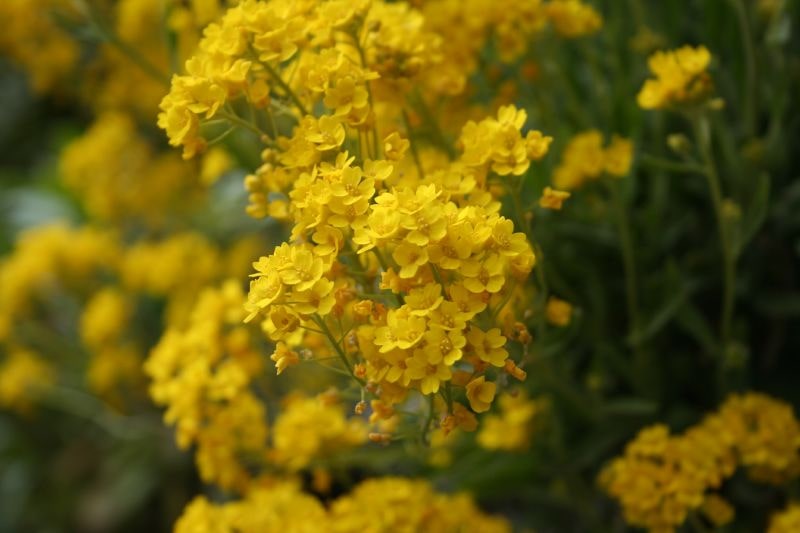
Adaptable ground covers such as basket of gold are generally easy to care for. You can plant them just about anywhere without a fuss and shine gold with the sun.
Low-growing silver-green foliage provides dense carpeting and is long-lasting throughout the year. Basket of gold is often planted as a living mulch between taller plants, along garden edges, or cascading down slopes or ‘cliffs.’
- Height: 7-9 inches
- Range: Asia and Europe
- Climate: Zone 3-7
- Functions:
- Light requirements: Full sun.
- Soil preferences: Well-drained and moist soils. Adaptable to various soil types from light to heavy.
‘Basket of gold’ plants are for sale here.
Irish moss (Sagina subulata)

Often used between paving stones or other plants, this ground cover offers a vibrant contrast with its lush green foliage and spring-to-summer white flowers.
This quickly forms into a dense carpet with the right conditions. Avoid planting Irish moss in dry and drought-prone areas. Moist (but not wet) areas are best.
Irish moss is quite insignificant for deer to even bother with.
- Height: 2-4 inches
- Range: Europe
- Climate: Zones 4-7
- Functions: A fine yet dense low-growing ground cover for partial shade.
- Light requirements: Full sun to partial shade.
- Soil preferences: Light well-drained soils or moist soils.
MySeedTopia offers seeds for Irish Moss ground cover. Plant starts are also available here.
Lambs ear
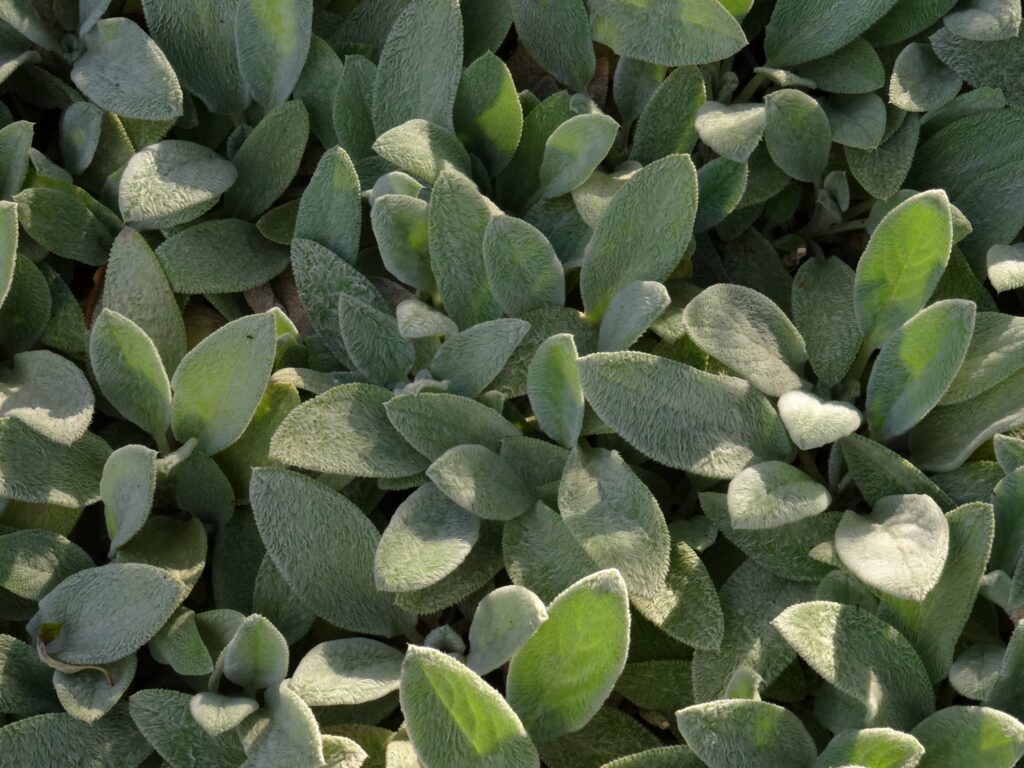
Lamb’s ear is known for being low maintenance. They tolerate dry soil and thrive in moist or dry conditions whether in shade or sun and don’t require rich soil to thrive.
- Height: 12-24 inches
- Range: Native to the Middle East
- Climate: Zones 4-8
- Functions: Ornamental ground cover for sensory gardens or rocky areas.
- Light requirements: Partial shade or no shade.
- Soil preferences: Moist or dry soil and drought tolerant when established.
3 types of lamb’s ear are available to order from this nursery or seeds are available here.
Creeping thyme
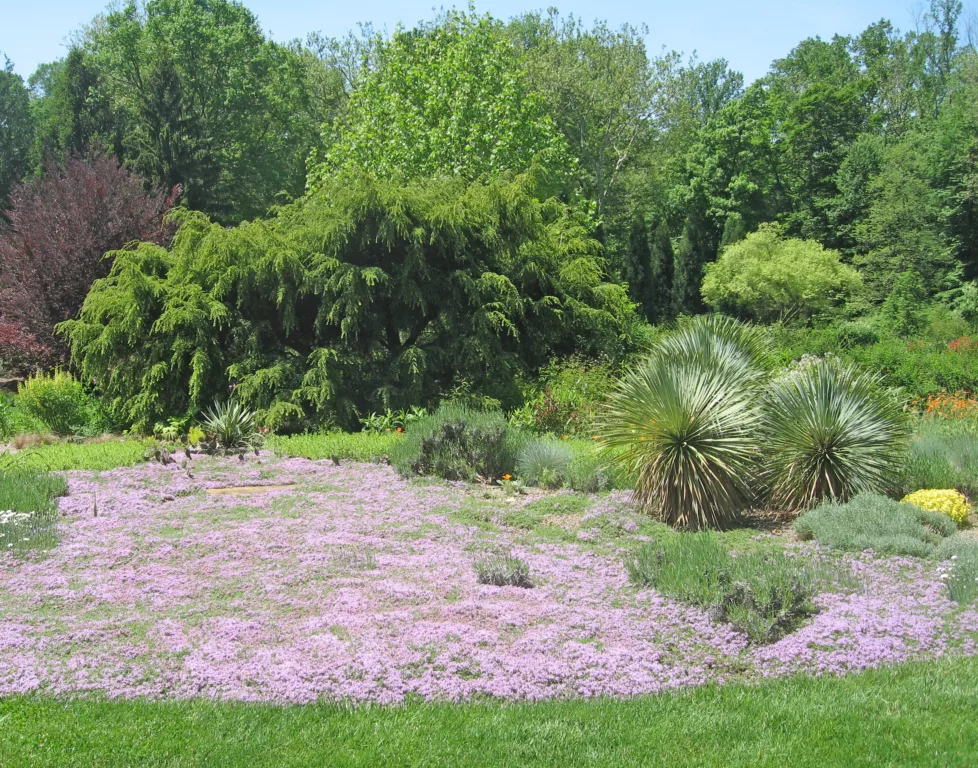
Creeping thyme is one of many popular ground covers for selective areas. Often planted between paving stones or along the edges of a mulch pathway, its pleasant fragrance releases with every step.
And for 3-4 weeks you’ll enjoy a change of color—in spring or summer, the dense pink flowers will hide the green.
- Height: 2-4 inches
- Range: Europe, Asia, Africa
- Climate: Zones 3-9
- Functions: Fragrant and walkable (light traffic) ground cover. Pest resistant. Attractive and ornamental.
- Light requirements: Full sun to partial shade.
- Soil preferences: Well-drained soils and drought tolerant.
MySeedTopia offers ‘magic carpet’ thyme and ‘mother of’ thyme as ground cover options.
Plant starts are offered by Nature Hills Nursery here.
Ajuga (bugleweed)
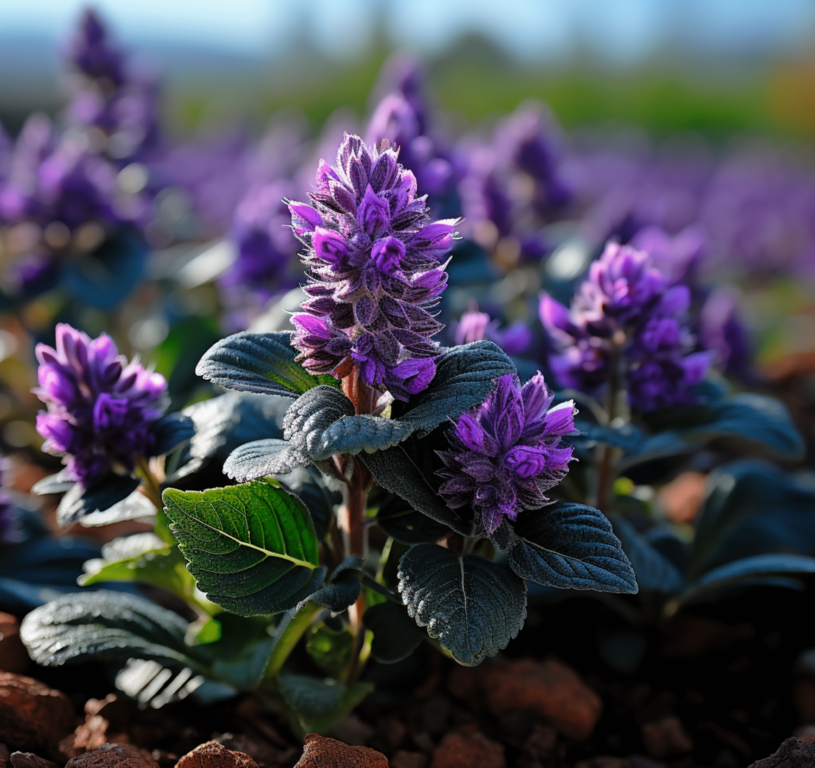
Bugleweed seems to be one of the most versatile and tough ground covers—no wonder it’s a common favorite.
Bugleweed is a go-to ground cover as it thrives in wet or dry conditions and most people plant it just about anywhere.
It forms a dense mat with spikes of blue-purple flowers, has cute creeping foliage, and keeps snug to the ground.
- Height: 4-8 inches.
- Range: Europe, Asia, North Africa.
- Climate: Zones 3-10
- Functions: Attracts bees and butterflies. Edible leaves and shoots. Cute carpeting ground coverage. Medicinal benefits. Ideal for rock gardens, erosion control, low growing ground coverage, and usefulness.
- Light requirements: Full/deep shade to partial shade.
- Soil preferences: Moist or wet soil. Tolerates droughts.
Plants and seeds are available here.
Japanese Spurge
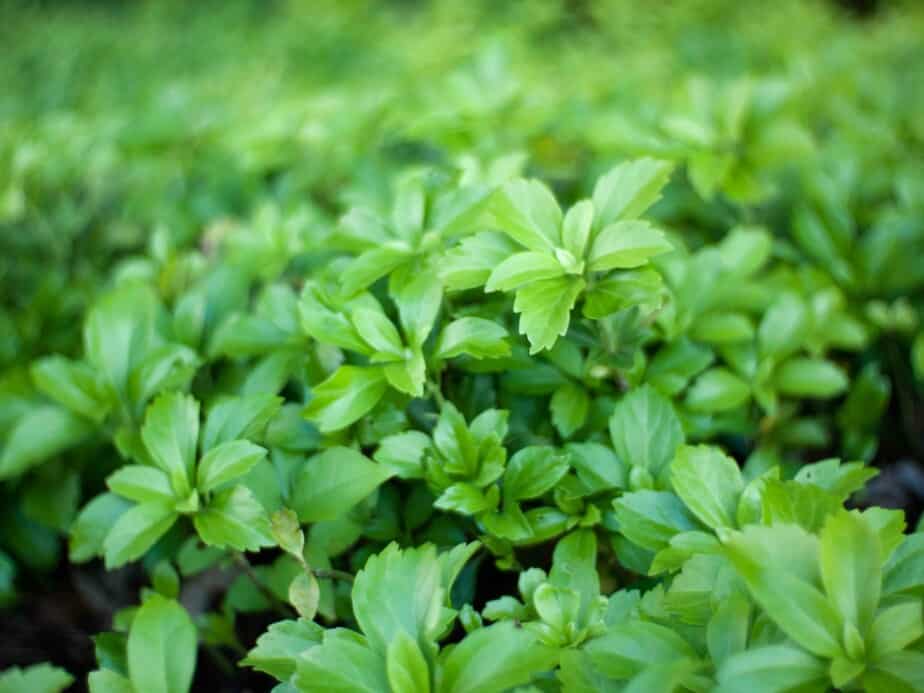
Japanese spurge offers a vibrant and eye-catching texture. It thrives in deep shade or partial shade and offers a dense bright green in darker spaces. While it grows fast, it isn’t invasive beyond the shade.
- Height: 2-8 inches
- Range: Asia
- Climate: Zones 4-8
- Functions: Best used under established shrubs or trees to control erosion, cover exposed soil, or fill gaps around rocks.
- Light requirements: Full/deep shade to partial shade.
- Soil preferences: Dry or moist soil and tolerant to drought.
From April to May, you’ll also enjoy the scent of inconspicuous flowers.
Japanese spurge seeds and cuttings are available here and plants are available here.
Vinca minor
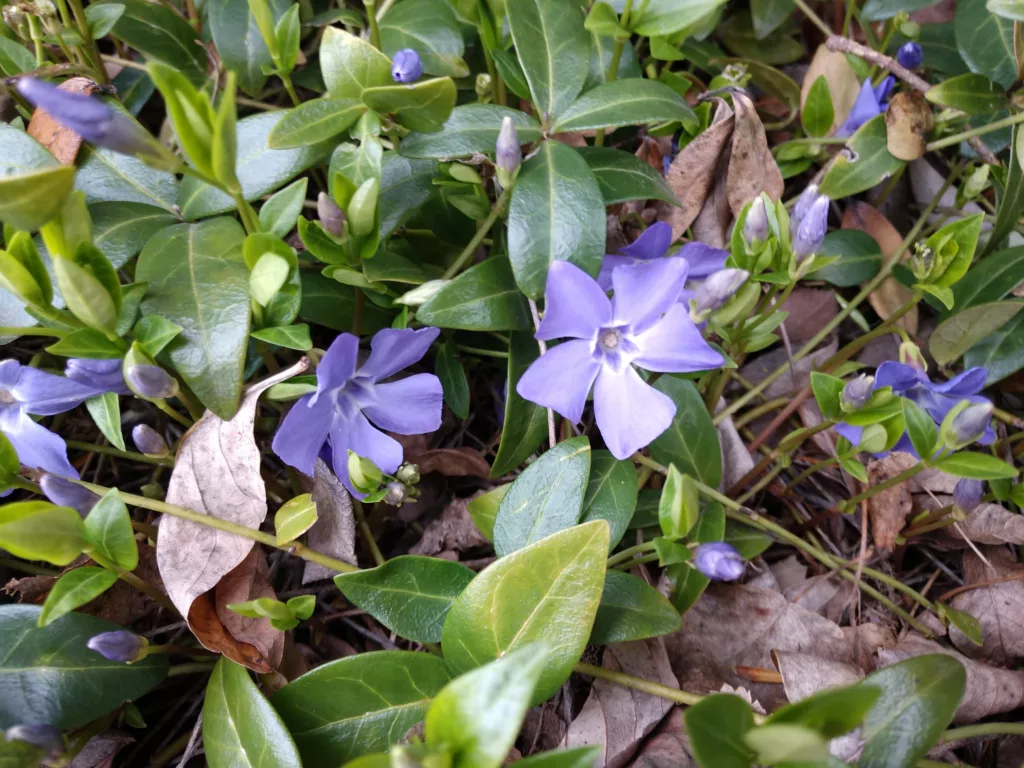
Also called Periwinkle, this is a semi-evergreen ground cover with blue-purple flowers. It’s a fast-growing erosion controller and a popular choice for dry shady spaces.
Although popular, it may be considered invasive or naturalizing in your area.
- Height: 6 inches
- Range: Europe and Asia
- Climate: Zones 4-9
- Functions: Ornamental flowering from April to May with season-round attractive foliage. Erosion controlling ground cover for rock gardens, food forests, steep slopes, shady areas, and borders.
- Light requirements: Full/deep shade to partial shade, or no shade.
- Soil preferences: Moist or dry soil and tolerates drought. Suitable for various soil types including heavy clay.
Plants are available here and seeds are here. Ordering seeds offers pink and other flower colors, but a container allows for quicker establishment.
Lily of the Valley
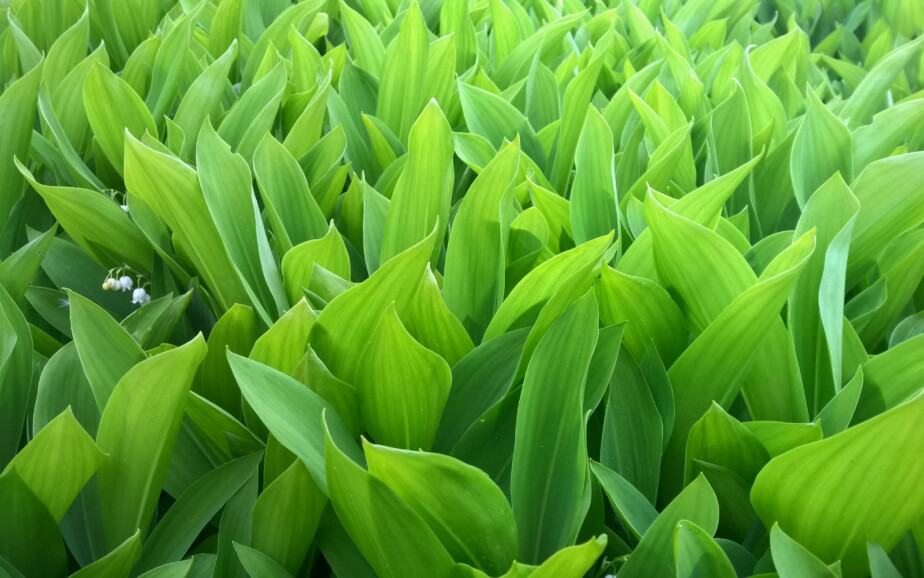
Lily of the valley is a very popular ornamental ground cover as it spreads fast and smells pleasant. It’s also a common choice because it grows in all light levels from full shade to full sun.
It is, however, considered invasive in some areas. Natural areas with native species tend to suffer when lily of the valley is introduced. If you must indulge in lily of the valley, it’s best to do so only in urban environments that have already uprooted the natural landscape.
Shade-loving perennial with fragrant, bell-shaped flowers from May to June.
- Height: 6-12 inches.
- Range: Europe and Asia.
- Climate: zone 2-7.
- Functions: Ornamental with attractive foliage, dainty flowers, and pleasant fragrance but considered invasive in many areas.
- Light requirements: Full shade, partial shade, or full sun.
- Soil preferences: Easy to grow in various conditions—Dry, moist, or wet soil. Suitable for heavy clay.
Consider Solomon’s seal (mentioned above) if the lily of the valley is invasive in your area! Their foliage and flowers are somewhat similar. Seeds are available here.
Coral Bells (Heuchera cylindrica)

Alum root, otherwise known as ‘coral bells,’ grows best in damp areas with partial shade. Low-growing foliage provides dense and semi-evergreen ground coverage. The leaves are also edible!
- Height: 10 inches (leaves) with flowers spiking up to 3 feet.
- Range: North America
- Climate: Zones 4-8
- Functions: Used primarily as an ornamental ground cover in shaded native, woodland, or rock gardens.
- Light requirements: Partial shade
- Soil preferences: Moist soil
The foliage of this ground cover comes in stunning shades and patterns from deep dark reds, purples, peach, and bright lime, to tri-coloring, basic greens, and more.
See seed selection or plant selection.
Iris
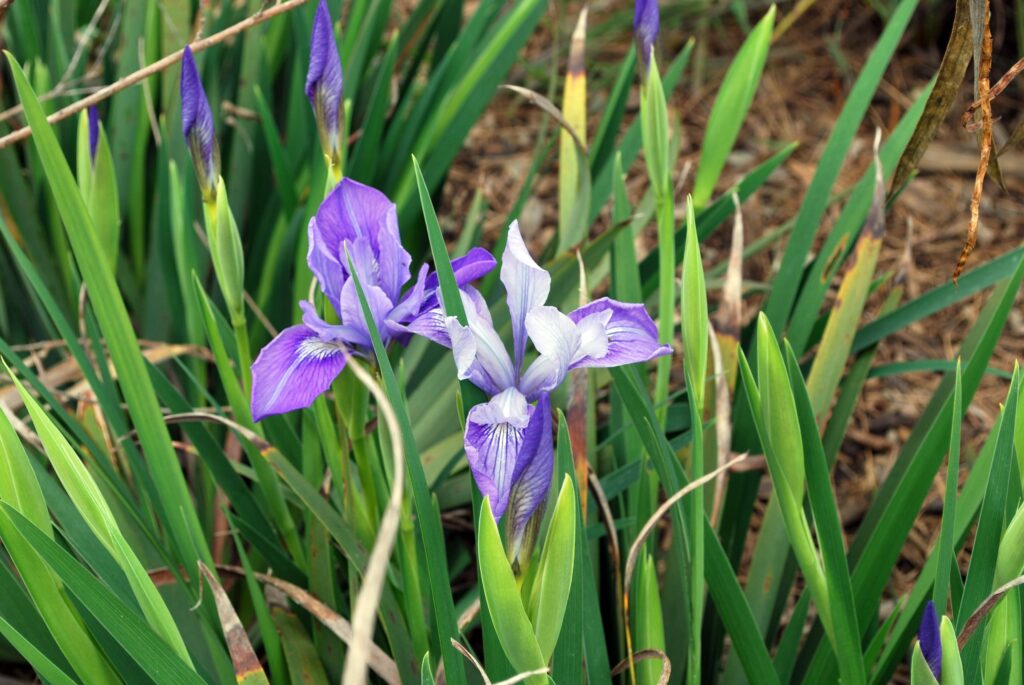
Irises are gorgeous native ground covers for wet and dry areas. Typically they are grown near bodies of water, either fresh or maritime. They are perfect for areas that are dry sometimes but have standing water during certain periods of the year. A perfect match for that type of spot.
- Height: 18 inches
- Range: Native to North America
- Climate: Zones 6-9
- Functions: Often used as an ornamental addition to neglectable gardens with flowers from May to June.
- Light requirements: Partial or no shade.
- Soil preferences: Moist or dry soil and wet or boggy areas. Even tolerates drought.
Mountain iris is offered by seed here.
Sweet woodruff

Sweet woodruff is a fragrant ground cover with an annual lifecycle. In our area, this plant freely and easily reseeds itself. You’ll find it pops up each year in the same spot and new spots as well.
- Height: 5-6 inches
- Range: Native to Europe and Asia
- Climate: Zones 3-7
- Functions: Fragrant. Food source for butterflies. Ornamental: attractive foliage and dainty white flowers from June to August. Best for ‘wild’ style gardens.
- Light requirements: Thrives in full shade, partial shade also works when sheltered from any hot sun.
- Soil preferences: Dry to moist soils with plenty of mulch
While lovely to look at, this plant does produce small burs when it goes to seed each year. The burs aren’t a terrible nuisance as they aren’t overly sticky or sharp like various native weeds. This plant is easy to get rid of if you ever want to. Simply cut it back when it goes to seed.
You can also control the spread by collecting its seeds before they
Seeds to plant sweet woodruff in your cold shady garden are available here on Etsy.
Lungwort
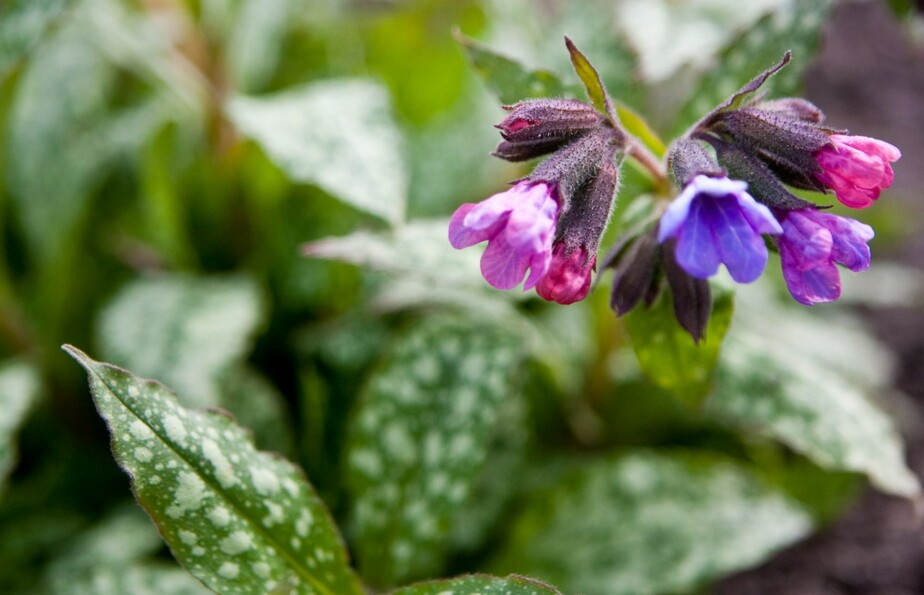
Fun fact, if you have a walnut that nothing grows under, plant lungwort! They thrive in all light conditions from full to partial shade and aren’t affected by the anti-plant chemical that black walnut trees produce.
Lungwort thrives in the understories of trees and other shaded areas. In these proper conditions, they tend to spread fast and are resistant to deer. Their foliage is quite beautiful and these plants are long-lived.
Lungwort is not generally known for being invasive.
- Height: 12-18 inches
- Range: Europe
- Climate: Zones 4-8
- Functions: Accompanied by purple flowers, the spotted semi-evergreen leaves are rough with coarse hairs. Deer and rabbits tend to avoid the plant for its texture. This ground cover is best used as a pest-deterring ornamental.
- Light requirements: Full/deep shade to partial shade or full sun.
- Soil preferences: Moist soil is ideal but tolerates drought.
Nature Hills Nursery currently offers 4 types of lungwort.
Deer resistant grasses
If you’re a grass-lover, plenty of interesting ground cover grasses are also deer-resistant. Here are 3 of the best options:
Up Next: How to Keep Deer Out of the Garden at Night Long Term
Recent Posts
There’s no shortage of full-sun ground covers for zone 4 climates! Each plant in this list can withstand the frigid temperatures and also enjoy the hot sun in summer. Full sun means that a plant...
There's no shortage of full sun ground covers, not even in zone 3! Zone 3 climates offer hot but short-lived summers and very cold winters. So each plant in this list can withstand the frigid...
